Modelling the response to vaccine in non-human primates to define SARS-CoV-2 mechanistic correlates of protection
- PMID: 35801637
- PMCID: PMC9282856
- DOI: 10.7554/eLife.75427
Modelling the response to vaccine in non-human primates to define SARS-CoV-2 mechanistic correlates of protection
Abstract
The definition of correlates of protection is critical for the development of next-generation SARS-CoV-2 vaccine platforms. Here, we propose a model-based approach for identifying mechanistic correlates of protection based on mathematical modelling of viral dynamics and data mining of immunological markers. The application to three different studies in non-human primates evaluating SARS-CoV-2 vaccines based on CD40-targeting, two-component spike nanoparticle and mRNA 1273 identifies and quantifies two main mechanisms that are a decrease of rate of cell infection and an increase in clearance of infected cells. Inhibition of RBD binding to ACE2 appears to be a robust mechanistic correlate of protection across the three vaccine platforms although not capturing the whole biological vaccine effect. The model shows that RBD/ACE2 binding inhibition represents a strong mechanism of protection which required significant reduction in blocking potency to effectively compromise the control of viral replication.
Keywords: SARS-CoV-2; correlate of protection; immunology; inflammation; neutralization; rhesus macaque; vaccines; viruses.
© 2022, Alexandre et al.
Conflict of interest statement
MA, RM, MP, SC, NK, SC, TN, BD, MS, MG, ND, MC, PM, MC, CL, AW, SZ, GZ, OS, RS, RL, YL, RT No competing interests declared
Figures
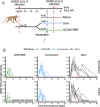
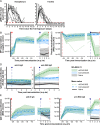




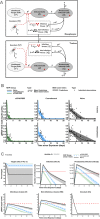

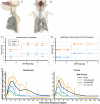

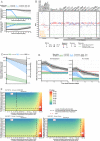
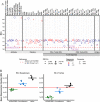

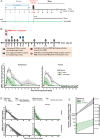



Similar articles
-
The spike-ACE2 binding assay: An in vitro platform for evaluating vaccination efficacy and for screening SARS-CoV-2 inhibitors and neutralizing antibodies.J Immunol Methods. 2022 Apr;503:113244. doi: 10.1016/j.jim.2022.113244. Epub 2022 Feb 23. J Immunol Methods. 2022. PMID: 35218866 Free PMC article.
-
High-Resolution Linear Epitope Mapping of the Receptor Binding Domain of SARS-CoV-2 Spike Protein in COVID-19 mRNA Vaccine Recipients.Microbiol Spectr. 2021 Dec 22;9(3):e0096521. doi: 10.1128/Spectrum.00965-21. Epub 2021 Nov 10. Microbiol Spectr. 2021. PMID: 34756082 Free PMC article.
-
A human cell-based SARS-CoV-2 vaccine elicits potent neutralizing antibody responses and protects mice from SARS-CoV-2 challenge.Emerg Microbes Infect. 2021 Dec;10(1):1555-1573. doi: 10.1080/22221751.2021.1957400. Emerg Microbes Infect. 2021. PMID: 34304724 Free PMC article.
-
Angiotensin-Converting Enzyme 2 (ACE2) in the Pathogenesis of ARDS in COVID-19.Front Immunol. 2021 Dec 22;12:732690. doi: 10.3389/fimmu.2021.732690. eCollection 2021. Front Immunol. 2021. PMID: 35003058 Free PMC article. Review.
-
The next frontier in vaccine design: blending immune correlates of protection into rational vaccine design.Curr Opin Immunol. 2022 Oct;78:102234. doi: 10.1016/j.coi.2022.102234. Epub 2022 Aug 13. Curr Opin Immunol. 2022. PMID: 35973352 Free PMC article. Review.
Cited by
-
The kinetics of SARS-CoV-2 infection based on a human challenge study.Proc Natl Acad Sci U S A. 2024 Nov 12;121(46):e2406303121. doi: 10.1073/pnas.2406303121. Epub 2024 Nov 7. Proc Natl Acad Sci U S A. 2024. PMID: 39508770 Free PMC article.
-
Viral Dynamic Models During COVID-19: Are We Ready for the Next Pandemic?CPT Pharmacometrics Syst Pharmacol. 2025 Aug;14(8):1289-1297. doi: 10.1002/psp4.70055. Epub 2025 Jun 2. CPT Pharmacometrics Syst Pharmacol. 2025. PMID: 40457567 Free PMC article. Review.
-
Serodynamics: A primer and synthetic review of methods for epidemiological inference using serological data.Epidemics. 2024 Dec;49:100806. doi: 10.1016/j.epidem.2024.100806. Epub 2024 Nov 30. Epidemics. 2024. PMID: 39647462 Free PMC article. Review.
-
Early administration of tecovirimat shortens the time to mpox clearance in a model of human infection.PLoS Biol. 2023 Dec 21;21(12):e3002249. doi: 10.1371/journal.pbio.3002249. eCollection 2023 Dec. PLoS Biol. 2023. PMID: 38127878 Free PMC article.
-
Within-host models of SARS-CoV-2: What can it teach us on the biological factors driving virus pathogenesis and transmission?Anaesth Crit Care Pain Med. 2022 Apr;41(2):101055. doi: 10.1016/j.accpm.2022.101055. Epub 2022 Mar 2. Anaesth Crit Care Pain Med. 2022. PMID: 35247638 Free PMC article. No abstract available.
References
-
- Alter G, Yu J, Liu J, Chandrashekar A, Borducchi EN, Tostanoski LH, McMahan K, Jacob-Dolan C, Martinez DR, Chang A, Anioke T, Lifton M, Nkolola J, Stephenson KE, Atyeo C, Shin S, Fields P, Kaplan I, Robins H, Amanat F, Krammer F, Baric RS, Le Gars M, Sadoff J, de Groot AM, Heerwegh D, Struyf F, Douoguih M, van Hoof J, Schuitemaker H, Barouch DH. Immunogenicity of Ad26.COV2.S vaccine against SARS-CoV-2 variants in humans. Nature. 2021;596:268–272. doi: 10.1038/s41586-021-03681-2. - DOI - PMC - PubMed
-
- Asgharian B, Price O, McClellan G, Corley R, Einstein DR, Jacob RE, Harkema J, Carey SA, Schelegle E, Hyde D, Kimbell JS, Miller FJ. Development of a rhesus monkey lung geometry model and application to particle deposition in comparison to humans. Inhalation Toxicology. 2012;24:869–899. doi: 10.3109/08958378.2012.725782. - DOI - PMC - PubMed
-
- Balelli I, Pasin C, Prague M, Crauste F, Effelterre TV, Bockstal V, Solforosi L, Thiébaut R. A model for establishment, maintenance and reactivation of the immune response after vaccination against Ebola virus. Journal of Theoretical Biology. 2020;495:110254. doi: 10.1016/j.jtbi.2020.110254. - DOI - PubMed
Publication types
MeSH terms
Substances
Associated data
LinkOut - more resources
Full Text Sources
Medical
Research Materials
Miscellaneous

